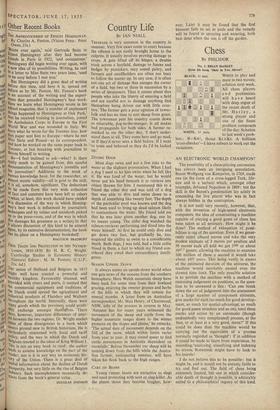Other Recent Books
THE APPRENTICESHIP OF ERNEST HEMINGWAY.
hit
',BEGIN over again,' said Gertrude Stein to Ernest Hemingway after they had become friends in Paris in 1922, 'and concentrate.' Hemingway did begin writing over again, with a new idea of its possibilities. Writing, he said in a letter to Miss Stein two years later, 'used to be easy before I met you.' But Hemingway did a great deal of writing before this time, and here it is, spread out before us by Mr. Fenton. Mr. Fenton's book is an account of the writing and the experi- ences that preceded Hemingway's best work. Here we learn what Hemingway wrote in his school magazine, that 'a number of unpleasant things happened to Hemingway at Oak Park,' that he received training in journalism, joined the Ambulance Corps in Europe in the First World War and was wounded in Italy. We learn what he wrote for the Toronto Star, how that paper sent him to Europe—where he met Miss Stein and Pound—as its correspondent, and how he worked on the same paper back in Toronto, ronto, at last breaking with journalism to devote himself to writing.
So—I feel inclined to ask—what? Is there really much to be gained from this careful documentation of Hemingway's juvenilia and his journalism? Additions to the stock of human knowledge have, for the researcher, an almost mystic validity—all is grist to the mill, It is all, somehow, significant. The deductions to be made from this very wide collection of fact and comment have been left to others What, at least, this work should have yielded is a discussion of the way in which Heming- Way's best work is influenced by journalistic techniques and by values and standards picked UP in the press-room, and of the way in which this damages his greatness as a writer, In that It allows discussion of this kind to be entered sits by its extensive documentation, the book uas place on a Hemingway bookshelf.
MALCOLM BRADBURY


































 Previous page
Previous page